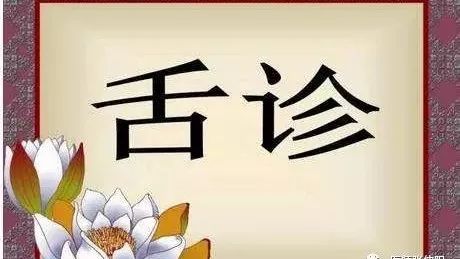Previous Articles on Tongue Diagnosis Series:
Discussion on Tongue Diagnosis — Tongue Coating
Discussion on Tongue Diagnosis — Tongue Body (Part 1)
Discussion on Tongue Diagnosis — Tongue Body (Part 2)
Discussion on Tongue Diagnosis — Tongue Body (Part 3)
Discussion on Tongue Diagnosis — Tongue Body (Part 4)
Main Text:
In the last article, we discussed the third part of tongue diagnosis —Nerves and some otherspecial tongue appearances
The nerves in the tongue primarily control the movement of the tongue muscles.
Some of this content has already been discussed in the muscle section.
Today, we will talk about other aspects.
We all know that the nerves controlling the tongue muscles originate from the cranial brain centers.
Therefore, aside from some damage to the nerve pathways,
the nerves of the tongue mainly reflect the condition ofbrain function.
It also reflects what we in TCM refer to as theShen (Spirit) condition.
In TCM, Shen is the most important aspect of life activities.
The sufficiency of Shen determines the vitality of a living being,the severity of illness after falling ill, andthe prognosis of recovery.
It can be said to be the central hub of life activities.
We can understand the condition of Shen through tongue appearance mainly by three aspects:
First is thebrightness of color, second is whether thetongue body is moist, and third is thecontrol of movement.
These points have been mentioned in previous discussions on blood vessels and muscles.
Why bring them up again here?
Because observing the Shen of the tongue is a comprehensive matter.
The tongue color, moisture, and movement are not singularly describable.
They will intersect with the content discussed earlier.
Therefore, the observation and judgment of Shen color are quite subtle.
It requires a comprehensive understanding of the content discussed in previous articles to make a judgment.
In summary, observing the Shen of the tongue is essentially observing whether the tongue hasvitality.
When we discuss the brightness of tongue color, it mainly helps to discern the strength of Shen Qi, which is the distribution of Yang Qi.
The moisture of the tongue body mainly reflects the sufficiency and distribution of body fluids, which is under the guidance of Shen, and the healthy functioning of the organs and the circulation of Qi and blood.
The flexibility of the tongue’s movement further reflects the condition of tongue muscle movement under nerve control, and also reflects the fullness of Shen.
Overall, a tongue with Shen shows a moist tongue body, bright red color, and flexible movement.
Conversely, a tongue without Shen appears dry, stiff, dark, lacking blood color, and inflexible.
Thus, in assessing the severity and direction of illness, a tongue with Shen indicates good prognosis, while a tongue without Shen indicates poor prognosis.
The brightness and moisture of the tongue rely on the physician’s judgment, and it is difficult to describe them vividly.
Details need to be gradually experienced by each practitioner.
There are some typical situations regarding tongue movement that are quite intuitive.
For example, whether the tongue muscle movement is flexible or stiff, whether it is centered or deviated.
Common situations include:
If the movement isstiff and rigid, it often indicates heat damaging body fluids or phlegm and blood stasis obstructing channels.
This often represents a critical illness; if not controlled, it may lead to convulsions or cardiovascular accidents.
If the tongue body istrembling and cannot move voluntarily, it often indicates internal wind.
This can be seen in cases of blood deficiency or heat damaging body fluids leading to wind.
At this time, nourishing Yin and calming wind is key.
If the tongue body iscontracted and rigid, it often indicates cold and blood stasis, and is often a critical condition.
If the tongue body iscontracted and soft, it is often seen in cases of extreme deficiency of essence and blood, which are difficult to treat.
In contrast to contraction, there is also the situation where the tongue body isprotruding and cannot retract. This tongue appearance is often seen in ICU patients, often indicating internal phlegm-heat disturbing the heart spirit, and can also be due to deficiency of Zong Qi.
If the tongue body isdeviated to one side and cannot return to the center, it is often due to wind evil, seen in cerebrovascular diseases.
Another situation is what we calltongue writhing, where the tongue constantly extends and sways left and right. This is often seen in patients with underdeveloped brain function.
Thus, it can be seen that patients with neurological involvement often have critical conditions.
In clinical practice, if such situations are observed, it is essential to raise awareness.
At this time, the patient’s condition is severe, and hospitalization is often required for continuous observation of changes in condition.
The tongue appearance in clinical practice can also reflect a person’scharacter, which is also related to the Shen of the tongue we discussed today.
A friend of mine has done some research on this, and I will directly list the summarized content as follows:
A thin tongue indicates eloquence, while a thick tongue indicates few words.
A short tongue suggests melancholy and insincerity.
A long tongue indicates eloquence and a tendency to gossip, commonly referred to as a ‘long-tongued woman.’
A triangular tongue suggests cleverness and cunning.
A wide tongue indicates loyalty and honesty.
A narrow tongue suggests a narrow-minded person.
A red and moist tongue indicates impatience and irritability, acting swiftly.
A pale tongue with teeth marks indicates laziness and a tendency to procrastinate.
Through observing the tongue in clinical practice, we can generally understand a person’s character.
This is quite helpful for us in choosing communication methods with patients and medication preferences.
Finally, let’s discuss some special phenomena and issues to pay attention to in tongue diagnosis.
Food Staining on the Tongue:
Consuming dairy products can cause the tongue coating to turn white.
Drinking sour plum soup, coffee, or tea can stain the tongue coating blackish-brown or tea-brown.
Chewing gum, drinking beverages, or consuming various snacks can also stain the tongue coating accordingly.
Eating green vegetables can stain the tongue coating green.
Eating egg yolks, citrus fruits, or persimmons can stain the tongue coating yellow.
Medication Staining on the Tongue:
Using antibiotics can lead to yellowish-brown or gray-black tongue coatings.
Consuming compound licorice tablets can stain the tongue coating blackish-brown.
Changes in Tongue Quality:
Using hormone medications can cause the tongue quality to turn red and the coating to become dry.
Chemotherapy drugs can reduce tongue coating or cause it to become dry.
Under direct sunlight, yellow coatings may lighten, and dark tongues may turn red.
Under fluorescent lights, yellow coatings may lighten, and tongue quality may turn light pink.
Eating hot, spicy food or exercising can cause the tongue quality to turn red.
Consuming cold drinks can cause the tongue quality to become pale or dark.
Immediately after eating or scraping the tongue coating, the coating may become thinner.
Eating nuts can thicken the tongue coating.
These special situations require careful observation and differentiation in clinical practice.
To avoid misdiagnosis.
Conclusion:
Alright, today we conclude our discussion on tongue diagnosis.
Due to work time constraints, this has been delayed for a long time.
I apologize for that.
Although it is difficult to cover everything in written form,
through these articles, I have outlined the broad framework of tongue diagnosis.
It is filled with valuable insights.
Readers need to organize and review it again.
Following my thoughts, it is not difficult to find that most of the content in TCM diagnosis is based on evidence.
It can be concluded through careful analysis and inference.
If readers can pay attention to learning, they will surely gain a lot.
At the very least, we should not fall into the simplistic notions that a red tongue indicates heat, a dark tongue indicates stasis, or a thick coating indicates dampness, which even elementary students understand.
I hope this is helpful to everyone.
The End.
Feel free to share this with others who may need it.
For more valuable TCM insights, please follow:


